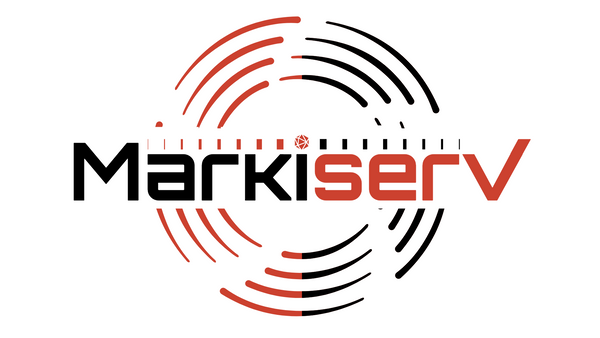
How to Approach Building a Marketing Budget & Considering Agencies
Share
Graphic design plays an essential role in modern marketing, bridging the gap between businesses and their audiences through compelling visual communication. For startups and small businesses with limited budgets, however, the question often arises: how can we afford high-quality graphic design without overspending? This guide provides practical advice on approaching graphic design contractors while staying within budget, crafting a marketing budget that incorporates graphic design effectively, and exploring the benefits of subscription-based graphic design services.
The Importance of Graphic Design in Marketing
Graphic design is more than just making something look good—it’s about communicating effectively through visuals. Your business’s logo, website layout, social media graphics, and print materials collectively shape your brand identity. A cohesive and professional design can:
- Instantly grab attention in competitive markets.
- Build trust and credibility with potential customers.
- Convey complex ideas in a simple, visually engaging way.
- Strengthen customer retention by providing a consistent brand experience.
For example, think about Coca-Cola’s iconic branding. The unique red and white color scheme, paired with its classic script logo, evokes feelings of nostalgia and happiness. Such branding was no accident but a result of intentional graphic design efforts. While not every business needs a Coca-Cola-level budget, understanding the strategic value of design helps justify allocating funds to it.
Factors to Consider When Creating a Budget for Graphic Design
Setting a realistic budget for graphic design starts with understanding the nuances of your needs and constraints. Here’s a detailed breakdown of factors that can influence your budget decisions:
- Project Scope
Clearly define the scope of work. Will you need a single deliverable, like a logo, or an entire suite of branding assets? For instance, a complete branding package—including logo design, business cards, and social media templates—will require a significantly larger budget than a one-off project.
- Quality vs. Quantity
While it may be tempting to go for the cheapest option, remember that quality often comes at a price. A poorly executed design might require costly revisions or rebranding later. Prioritize high-quality designs for crucial assets like logos and product packaging.
- Timelines and Deadlines
Rushing a project often incurs additional fees. Planning your projects in advance allows you to avoid extra costs associated with expedited delivery.
- Experience Level of Designers
Freelance graphic designers, agencies, and subscription-based services cater to various budget levels. Junior designers may be more affordable but might need more guidance, while experienced professionals deliver polished results with less oversight.
- Revisions and Feedback Cycles
Every design project involves rounds of revisions. Be sure to account for this in your budget, as contractors often charge for additional changes beyond a certain point. Communicate your vision clearly from the outset to minimize back-and-forth.
Building a Marketing Budget
A thoughtful marketing budget ensures that all aspects of your marketing strategy, including graphic design, receive the necessary funding. Follow these steps to create a comprehensive budget:
Step 1: Define Marketing Goals
Start by identifying your primary marketing objectives. Are you focused on building brand awareness, driving sales, or increasing website traffic? Your goals will determine how much emphasis to place on graphic design.
Step 2: Calculate the Total Marketing Budget
Industry experts often recommend allocating 7-10% of gross revenue to marketing efforts. This provides a baseline for your overall budget.
Step 3: Categorize Your Budget
Break your budget into categories, such as:
- Advertising (e.g., Google Ads, Facebook Ads)
- Content Creation (e.g., blogs, videos)
- Social Media Management
- Graphic Design
Each category should align with your goals. For example, if launching a new product, prioritize design for packaging and promotional materials.
Step 4: Monitor and Adjust
Marketing budgets are not static. Regularly review your spending and performance metrics to reallocate resources where they deliver the best return on investment (ROI).
Where and When to Include Graphic Design Agencies in Your Budget
Adding graphic design agencies to your marketing budget is a strategic decision that can offer significant benefits under the right circumstances.
- During a Rebranding or Launch
When launching a new business or product, first impressions matter. Investing in professional design ensures your brand stands out in crowded markets. For example, a polished logo and cohesive visual identity can attract attention and foster trust.
- For Seasonal Campaigns
Seasonal promotions often require specialized graphics tailored to specific audiences. Agencies can quickly deliver high-quality designs for Black Friday sales, holiday promotions, or back-to-school campaigns.
- For Ongoing Support
Businesses with constant design needs—like weekly social media posts or monthly email newsletters—may benefit from agency support. A retainer or subscription model ensures you always have access to design expertise.
- Scaling Up Marketing Efforts
As your business grows, so does the complexity of your marketing initiatives. Agencies can help maintain consistent branding across multiple channels.
Benefits of Subscription-Based Graphic Design Agencies
Subscription-based services have revolutionized how businesses access graphic design. Here’s why they are an excellent choice for budget-conscious companies:
- Cost Predictability
Flat monthly fees eliminate unexpected costs, making it easier to stick to a budget.
- Access to a Team of Designers
Subscriptions typically give you access to diverse design professionals, offering versatility in project styles.
- Unlimited Design Requests
Many subscription services allow unlimited requests, maximizing ROI for businesses with high design demands.
- Flexibility and Scalability
You can adjust your subscription level as your business grows, ensuring you pay only for what you need.
- Reduced Overhead
Outsourcing design eliminates the costs of hiring, training, and retaining in-house designers.
Tips for Maximizing Value from Graphic Design Contractors
To get the most out of your investment:
-
Be Specific in Your Briefs
Clear communication minimizes revisions. Include details about colors, fonts, and overall style in your project briefs. -
Leverage Templates
Reusable templates for recurring projects, such as newsletters or social media graphics, save both time and money. -
Batch Similar Projects
Submit multiple projects simultaneously to negotiate discounts or streamline workflow. -
Use Collaboration Tools
Tools like Trello or Slack can help you manage feedback efficiently and keep contractors aligned with your expectations.
Conclusion
Graphic design is a critical component of any marketing strategy. By carefully planning your budget, exploring cost-effective solutions like subscription-based agencies, and using contractors strategically, businesses can access professional design services without overspending. With the right approach, even small businesses can create impactful visuals that resonate with their audiences and drive success.
Helpful Links to Learn More:
How to Create a Budget for Custom Graphic Design [With Template]
This guide from Clutch offers a comprehensive approach to building a budget for custom graphic design services, complete with a downloadable budgeting template.
10 Proven Benefits of Subscription-Based Graphic Design
Design Force outlines the advantages of adopting a subscription-based model for graphic design, highlighting cost-effectiveness and scalability.
The Pros and Cons of Subscription-Based Graphic Design Services
An insightful article from DesignYourWay discussing the benefits and potential drawbacks of subscription-based graphic design services.
How to Create a Graphic Design Budget for Your Business
Hubstaff provides strategies for setting a reasonable budget for graphic design, including considerations for hiring freelancers or agencies.
